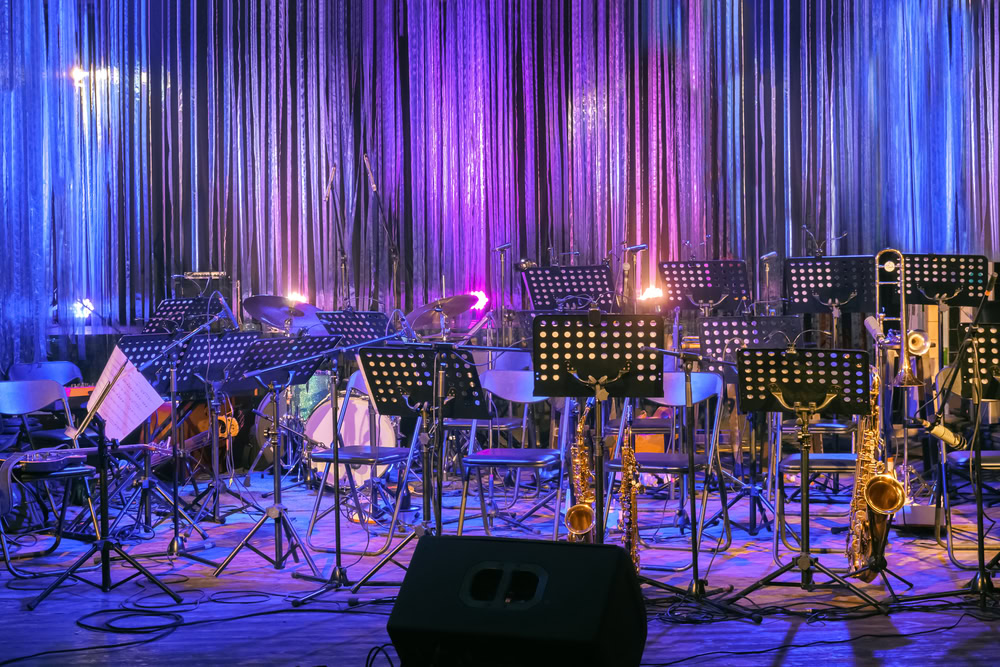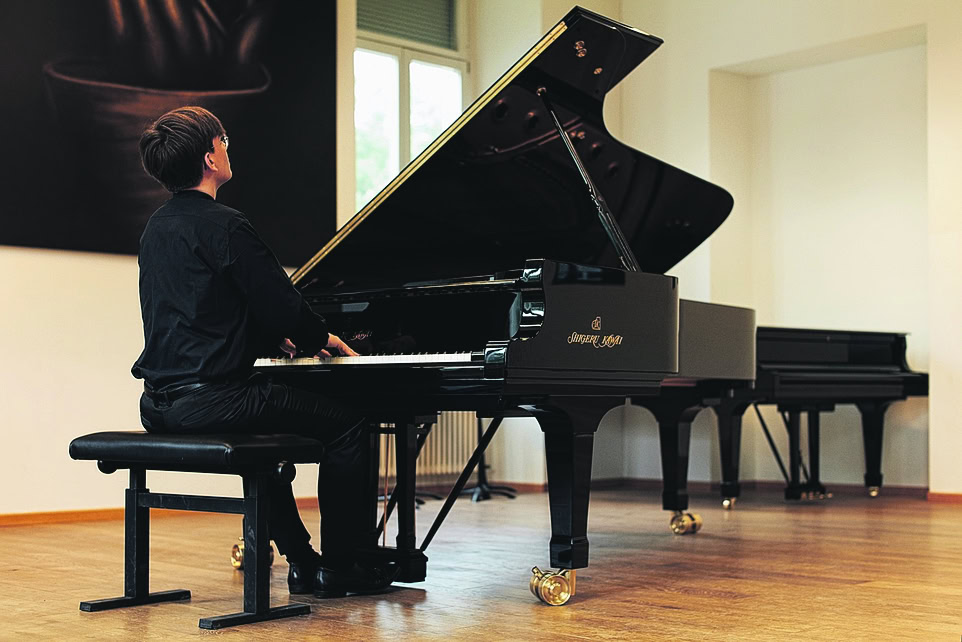Practicing in the flow
How practicing becomes a self-organizing process.

Andreas Burzik -Practicing in the flow is a method that aims to lead musicians into a state of deep fusion with what they are doing when practicing an instrument. It enables the experience that conscious, deliberate control of the practicing process can be abandoned in favour of a process that unfolds from within and is guided by sensory perception. Basis of the Practicing in the flow is a highly refined perception in the key sensory channels, the sense of touch, hearing and kinaesthetic sense of movement.
The sense of touch, for example, is about the points at which a player has direct contact with their instrument. Optimal and effective power transmission to the instrument is expressed in the feeling of a "rich" connection to the body of sound. Listening is about developing a subtle sense of sound. Basically, the sound quality produced when practicing should please the player. This sounds like a banality. However, if you observe musicians practising, you will notice that their attention is often caught up in other aspects and that the beauty of the sound does not constantly play an important role. (For intonating instruments, it is then a matter of sensitizing oneself to an intonation organized by the overtones, which leads to a fusion of sounds and an extremely satisfying "passing on" of the sound from note to note).
In the case of intonating instruments, a sensitization to intonation organized by the overtones is then important. This leads to a fusion of sounds and an extremely satisfying "passing on" of the sound from tone to tone.
The kinaesthetic feeling of movement is about the quality of effortlessness. What is meant here is not complete relaxation or limpness, but a physical feeling of not straining, light, flowing action, a feeling of swinging. Surprisingly, many instrumental methods lack a consistent and subtle involvement of the whole body in one's own playing. Many musicians play their instrument using only their arms, a form of movement that never occurs in everyday life. It leads to muscular tension and is probably the cause of numerous musical illnesses. Needless to say, a "paralyzed" body also costs sound. Musicians who resonate produce significantly more overtones and a wonderful, "full-bodied" and sustainable sound.
Once these "guiding feelings" have been established in the decisive sensory channels at the beginning of a practice sequence, the student can begin to work on the current literature. The first steps in approaching a piece then consist of inviting the sounds of this piece into your "comfort zone", so to speak; they consist of a playful and consistently musically designed exploration and cultivation of the sounds of the piece and the sensations experienced, without paying attention to note values, ties, phrasing, tempi, dynamics or interpretations.
With growing confidence in listening to and feeling the piece, a clearly perceptible will to approach the desired concert version emerges, to try out the ties, tempi, dynamics and different interpretative versions. The personal comfort zone begins to expand, it starts to pulsate. The result is a flowing back and forth between risky excursions and a retreat and playful "recreation" of processes in which disturbances in contact with the instrument or the sound were perceived. In this way, the comfort zone expands pulsatingly until, in the best case, it encompasses the desired concert version.
Practicing in the flow does not feel like "practicing". It is rather a highly concentrated and highly committed performance of the piece, which is based on an extremely short feedback loop between sensory perception and creative action and requires no mental interference. Trustingly and patiently surrendering to this process, which is controlled from within, is one of the mental challenges of Practicing in the flow.
Andreas Burzik
... is a qualified psychologist and trained violinist. In addition to his international teaching and seminar activities, he works as a psychotherapist and coach in his own practice. 2007-2016 Mental coach of the Orchestra Academy of the Bavarian Radio Symphony Orchestra, Munich.
More information at








